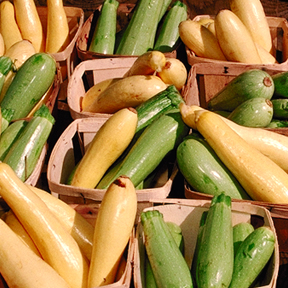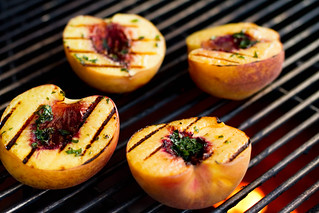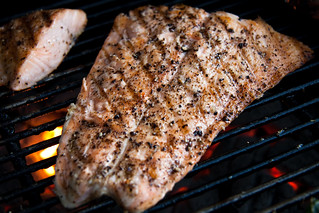A grill is a great tool to add to your culinary repertoire - and summer is a great time to use it! But grill safety is one of the most overlooked aspects of grilling. And, like most home accidents, it is usually the smallest detail that is overlooked that leads to the biggest disasters.
Without the right tools and techniques, your grilling may not be safe. With this in mind, today we will be covering tools to use as well as how to handle your grill to stay safe. By keeping these tips and suggestions in mind before you begin grilling, you will have the most delicious outcome, as well as a great time! Let's take a look at the tools and rules that make for a safe grilling experience.
Tools for Safe Grilling
You need the right tools to not only create the best grilled meals, but to do so safely. For instance, you want a good pair of long handled tongs that pinch completely closed so you can easily pick up smaller items, like fruit and veggies. You want tongs that are strong so you can turn heavier items like steak and chicken. A nice long handled spatula is good, too. But skip the carving fork for turning meat, because every time you poke a hole in the meat, juices run out. The giant carving fork can be used once the meat is removed and rested.
A long handled basting brush is also a necessary tool so that you can mop the sauce or marinade onto the food while it is on the grill. And don't forget the grilling gloves! These special gloves will keep you safer when moving food around. Of course, you'll want to invest in at least one basket and vented tray for smaller foods. Then the sky's the limit. But, with just these few tools, you will be ready to grill keeping safety as well as success in mind.
Another great tool to have on hand is a set of long grill matches and extra batteries for the grill's ignition switch. If your ignition switch fails, you can safely light your grill to get your cooking underway. Then, when you have time, replace your ignition battery so you're ready for tomorrow's grilling.
Gas Grill Safety Rules
The most important safety tip to keep in mind is to follow your grill manufacturer's instructions to the letter. Lighting instructions are tedious in gas grills for a reason. If your gas grill doesn't light, and the instructions say to wait five minutes before attempting to light again, WAIT FIVE MINUTES. That is not a suggestion – it is a rule. And in this case, rules are NOT meant to be broken.
Never leave the gas valve open between grilling time. If there is a small leak, the gas may converge under the closed cover and be there when you go to light your grill the next time. Very serious mistake. Turn the gas on and off every time you grill. And never move your grill while lit or when the gas valve is open.
Keep the lid open on a gas grill after cooking for at least 15 minutes to allow the grill to cool down and to let any lingering gas evaporate. When the grill is totally cool, cover it with a good grill cover. Many people skip this part, but this is actually a safety tip. Outdoor debris, sand, and pollen in the air will settle in the gas jets and the dials, eventually leading to clogging, corrosion, or both. This will not end well. I guarantee, if you start covering your gas grill, you'll be amazed at how fast your cover gets dirty. THAT is the dirt that would have landed in your grill's working parts. See?
Don't forget the maintenance. Your gas grill owner's manual will come with specific maintenance jobs to be done routinely. If you're not comfortable replacing batteries or gas lines, or cleaning the gas jets and all the connections, then hire someone. And, yes, spiders will 'nest' in abandoned grills. That alone may be reason enough to pay someone to clean and maintain your grill on a routine basis. You decide.
Charcoal Grill Safety Rules
Now, we're not just picking on gas grills. Charcoal grills have their own safety concerns. With charcoal grills, the instructions and maintenance may seem simpler, but it is still important.
Again, the most obvious safety issues are focused on lighting the fire. In this case, the tools are charcoal briquettes, or a similar flame producing vehicle, and perhaps a liquid to get the process going. You'll also have tools to help speed up the process, such as chimneys designed to keep the coals closer together so they ignite each other without the aid of an explosive liquid.
The first and most dangerous component to lighting a charcoal grill is the lighter fluid. If you opt to use a charcoal lighter fluid, you MUST use an actual made-for-charcoal lighter fluid. This means no gas and no kerosene. Let me repeat that; NO gas and NO kerosene.
|
|
| Preparing grill for grilling, grill with flames and cones. (Photo credit: Wikipedia) |
When using charcoal lighter fluid, follow the instructions carefully. You'll be soaking the charcoal in the lighter fluid before throwing your match on. You will not be taking the can and spraying the lighter fluid into a lighted pile of charcoal. If done correctly, your charcoal should not explode, but should burn quickly at first, then slow to a nice simmer and finally end up with glowing coals. Even if you use your charcoal lighter fluid correctly, you still want to use a good strong kitchen match, then stand back.
You can also use lighter fluid infused charcoal briquettes that are widely available. You still need to be careful, but at least you won't have a can of explosive poison sitting around the house. If that thought scares you, then opt for the infused briquettes.
Or to avoid the whole situation, you may want to buy a simple chimney starter made specifically for charcoal fires. These are handy-dandy gadgets that are inexpensive to buy and easy to use. You can eliminate the fluid and fluid-soaked charcoal briquettes entirely. All you need is a little kindling or paper, a pile of briquettes, and a match. Remember to set your chimney starter in a safe, stable, out of the way ventilated area. And remember to wear your grilling gloves whenever you are handling your chimney.
If you are removing the charcoal ash after grilling, be sure the coals have completely gone out. Then dump them in a metal container like a bucket to store for at least several days before discarding. Only move the grill when it is completely cooled down after grilling. Never attempt to move a hot grill. People are burned and fires are started just by breaking this one rule.
Think seriously about the location of your grill. You need to set up an outdoor area, at least two feet away from a combustible wall, and on a fire-safe surface. Grilling, whether gas or charcoal, must not be done in an enclosed area; not even a screened-in porch. The gases from the charcoal or the propane will gather in the corners and hover, possibly undetected, until someone gets sick, or worse.
Okay, now that I've got you totally scared, I'm here to tell you that grilling out is nothing to be afraid of. It is, however, a serious business. You must be mindful of how you operate your grill. Use the right tools and follow these safety tips and you will enjoy your grilling experience more than ever!
Now that we've got that out of the way, be sure to check back later this week for some tasty summer grill recipes!

















